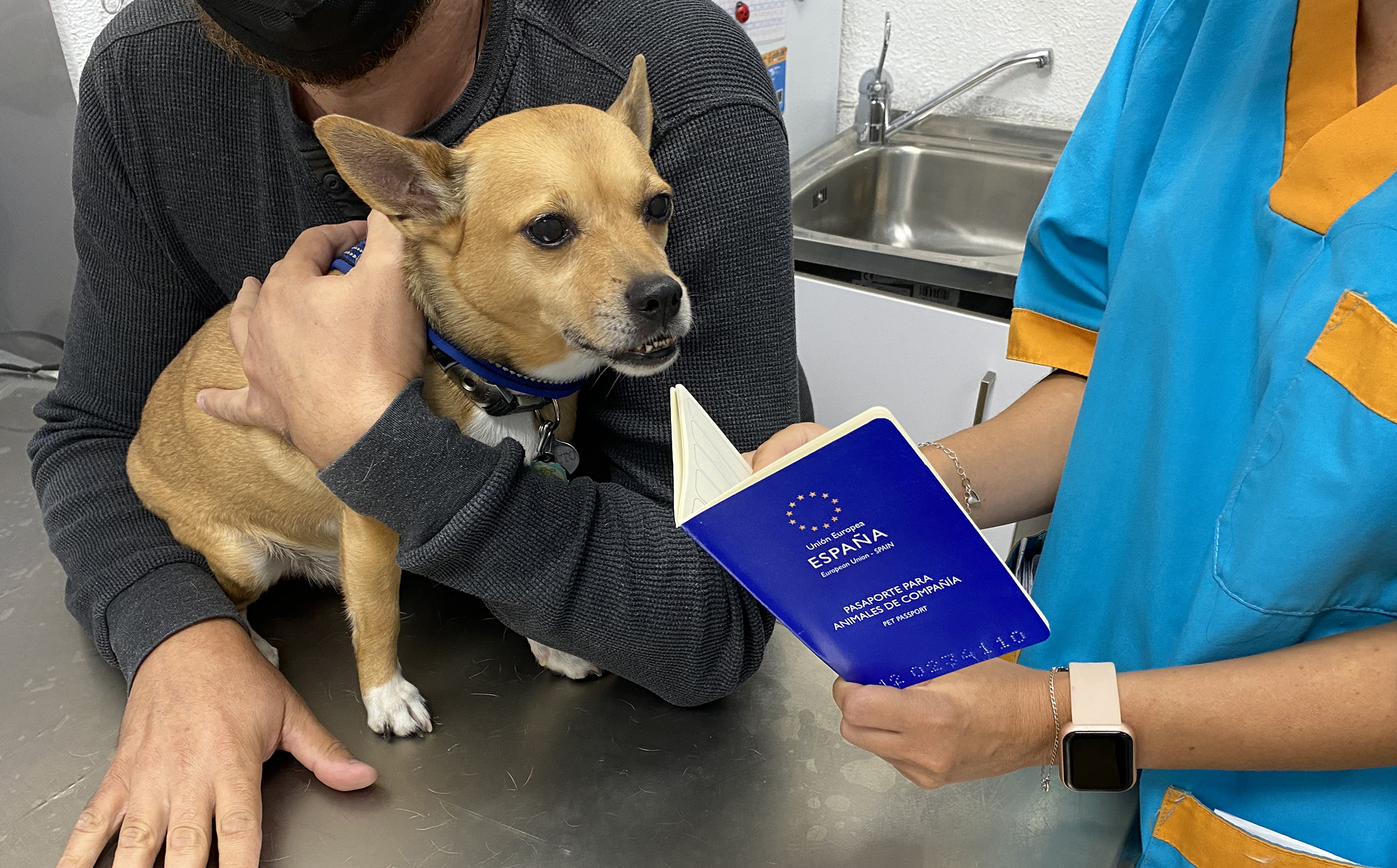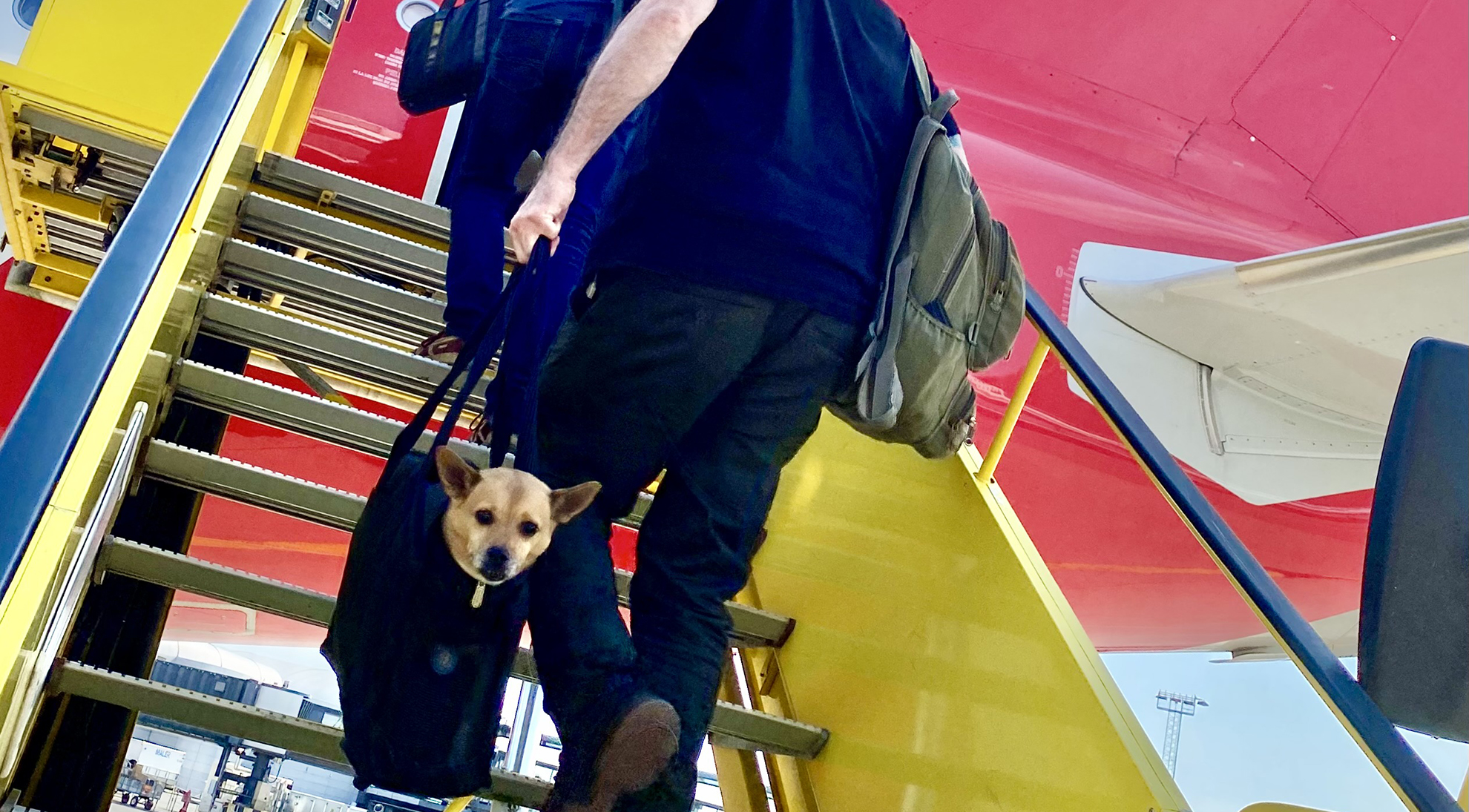 José Balido
José Balido
by José Balido
Maybe, like more and more travellers these days, you just can’t bear to part with your furry friend for more than a day or two. Maybe Max dreams of practicing his Spanish bark. Or Patches wants to become a jet-setting Instagram influencer. Or all of the above. The good news is that travelling with your non-human family member(s) today is easier than ever, and you’re all but guaranteed the trip of your life. And, it goes without saying, priceless pics for your feed.
Travel with pets does, however, present its challenges, so to help you ensure a fun and stress-free experience, here are our top ten pet travel tips.
- Are they truly up to travel? You can’t ask them, of course, but it’s clear that an older pet or one with mobility issues might not enjoy sauntering around Madrid the way you will. Is Sparky fully housebroken? If not, please stop right here. Also, certain breeds with short or flattened snouts (“brachycephalic”) such as pugs may not be allowed on board due to potential breathing issues. In every case, if in doubt, check with your vet.
- Passport, please! Yes, pets have "passports" too, and they’re just as important as yours, as they confirm that they’re properly microchipped and up to date on their shots. Always check with your airline for current requirements. Within Europe, normally the "pet passport" will suffice, but otherwise documentation may vary depending on your origin and destination.
 MascoStyle Madrid
MascoStyle Madrid
- Make sure the destination is appropriate. Sure, any four-legger would love to sniff the sidewalks of the Costa del Sol any time of year, but is your short-haired gal likely to enjoy Berlin in January, even with its beautiful parks and green spaces? (Spoiler alert: probably nein.) Also, are there adequate facilities (dog runs, pet-friendly beaches, emergency vets…) within a reasonable distance of your lodgings? Can you take them in your rental car, in taxis or on public transportation, and is a carrier or muzzle required? To avoid surprises, it helps to resolve these issues first. Apart from the local travel office, there are plenty of websites and blogs you can check for info as well.
- Book together. Capacity for four-legged passengers - especially in the cabin but also in the hold - is limited, so if your little friend meets the weight and other requirements, make sure to call the airline to reserve their place and book your ticket at the very same time to ensure you can both get on the same flight. When possible, go for nonstop flights or ones with the shortest possible layovers.
- Get the right pet carrier. In the cabin, dogs, cats, fish, turtles and birds (except birds of prey) may travel, and each clearly will need an appropriate carrier that can fit under the seat in front of you. For larger animals traveling in the hold, a rigid crate is required. In both cases, they must allow the lucky traveller inside to be able to stand, turn around and lie down. It’s best to get them used to the carrier well before the flight (treats placed inside are ever so helpful, unsuprisingly). Get dimensions, fares and other details for Iberia flights here.
 José Balido
José Balido
- Do this before the flight. If we’re talking dogs, make sure to take them on a good long walk before the flight, if you know what we mean. If it’s a long flight, you may also want to restrict food and water somewhat a few hours before, though of course you should check with your veterinarian first to make sure it’s safe for your pet, depending on age and/or physical condition.
- Comforts of home. You’re bringing your best friend along, why shouldn’t he/she get to do the same? Pack that favorite toy or blankie that will create a sense of familiarity in new surroundings, along with his/her usual food (upset tummies are no fun in general, but especially on holiday). Collapsible bowls are great, too - and need we mention plastic baggies for your daily walks?
- Location, location, location. You’re a responsible pet owner, of course, and while you might never let Baxter off his leash at home, you might be tempted at some parks and beaches in your destination that allow it. For these times, a GPS locator for his collar means that, in the unlikely event he scampers off, you can track him immediately right on your smart phone.
- What to do? Little Lulu doesn’t have to stay in your hotel room like a four-footed Cinderella while you get to have all the fun. You’d be surprised at all the activities you can enjoy with your pets in your destination. Just to cite one example, just outside Copenhagen you can wander around the idyllic expanse of the Frilandsmuseet Open Air Museum (above), with centuries-old fairytale cottages from all around Denmark to sniff, and adorable farm animals to yap at. And Madrid's Retiro Park is historic, highly scenic, and also very welcoming to doggos (and kitties, too - we've seen more than one of them on leashes here). Plug “pet-friendly activities in [your destination]” into your favorite search engine and go to town, so to speak. Without tiring out the little angel, of course, and making sure they stay hydrated and well fed.
- Take lotsa pics! And don’t be afraid to saturate your social media feed. Who doesn’t love cute critter shots - and in exotic settings, to boot? And one more thing: you and your best buddy will always remember this trip, so give them lots and lots of love. And treats.
Comments